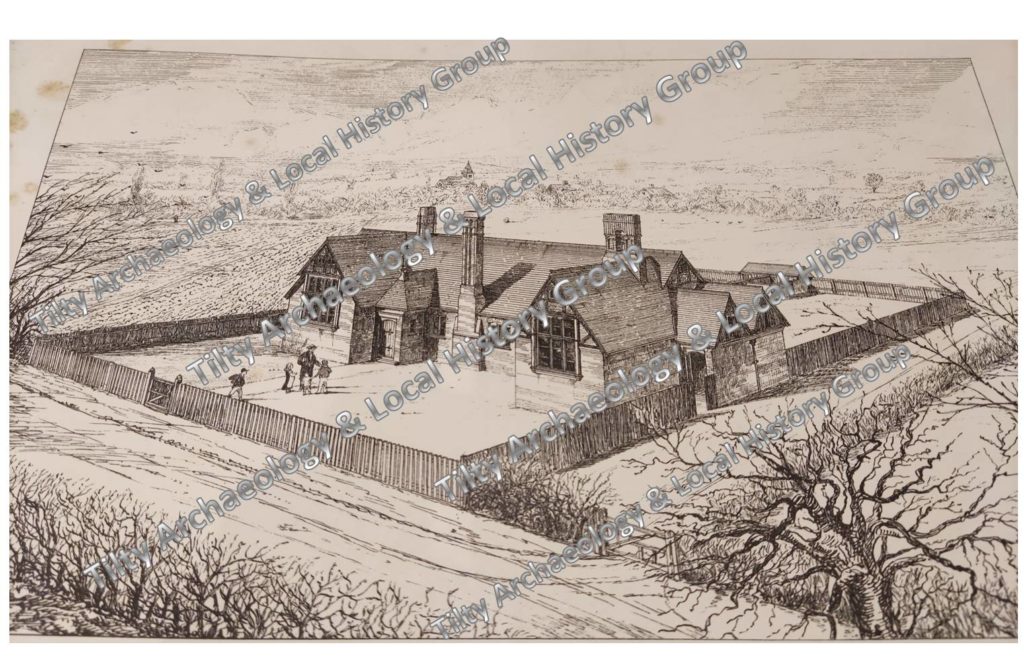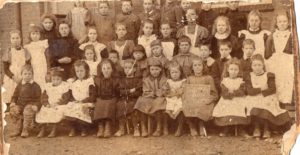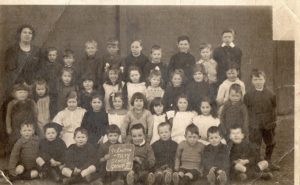Before the current Great Easton Primary School was built (alongside what is now the B184) the Rebecca Meade Charity School taught local children in a building next to where Great Easton village Hall now stands. The building survived until 1967 when the current houses were built.
The story of the current school begins in 1880 when the Elementary Education Act was passed. This made school attendance compulsory for children aged from 5 to 10 years old.
In 1881 Lord and Lady Brooke (later the Earl and Countess of Warwick), of Easton Lodge, donated half an acre of land and £350 to build a new school for boys and girls. Building was completed in 1882 to the architects design below.

The total cost was £1,549 and the bill for school desks reports 54 desks for boys, 54 for girls and 8 for infants. This gives a capacity of 108 children and 8 infants.
The school opened on 1st February 1882, with Mr Kelly as headmaster. Funds needed to be raised to pay the remainder of the costs, and in 1883 fund raisers were reported in local newspapers as follows:-
Essex Herald 12 March 1883
A Fancy Dress and Calico Ball at the new school at Great Easton, to be held on Thursday 5 April 1883.
Ladies tickets 7/6 Gents. 12/6
An efficient band is engaged.
Dancing to commence at nine o’clock.
Essex Herald 30 July 1883
Bazaar at Easton Lodge to pay for Great Easton school building.
£900 debt still.
Lord and Lady Brooke opened the bazaar, and Lord Brooke made a speech.
Takings amounted to £300 over two days.
Mr Kelly did not stay long as Headmaster. In 1883 Samuel Hart became the new headmaster, and remained in post for the next 20 years.
School work was shared with the agricultural duties as most children were required to help out, particularly at harvest time.
In 1893 the school leaving age was raised to 11.
In 1899 it was raised again to 12.
In July 1899 the school was closed because of a Diphtheria epidemic.
After the First World War the 1918 Education Act raised the school leaving age to 14, and abolished all fees nationwide.
Photos of school groups in 1900 and 1919 – please get in touch if you know any of the faces:
 |  |
|---|
The Second World War saw the school expand hugely due to the many evacuees from London. So many in fact that the school day was split into morning and afternoon sessions between the occasional air raid warning.
For an account of life during the war years, kindly provided by Alf Wright, click here.
After the war the school leaving age was raised to 15.
Further expansion
As the local population grew, building work expanded the school in the 1960s and 1970s. Even this was not enough and a temporary or demountable classroom was sited in the playground to provide another classroom which survived until the 1980s.
More building works continued into the new millennium but the basic design from the road is still clearly visible today.
If you have any information about the school’s history – or any photographs – do please get in touch, as we would like to add to this section of the website.
Report by Darren Stone, April 2021
Last updated: 4th May 2021